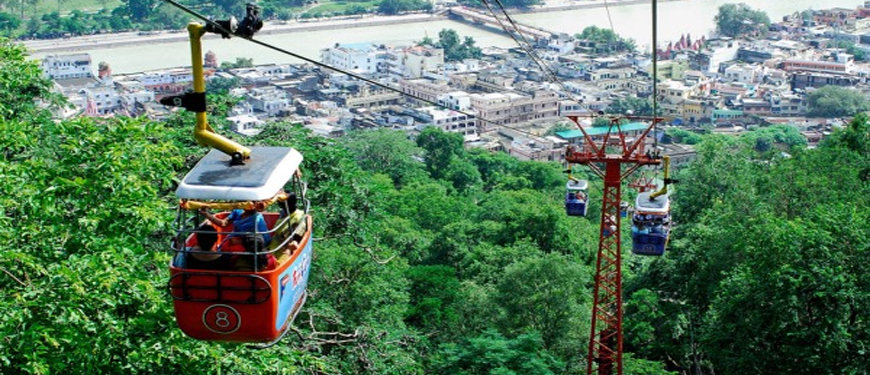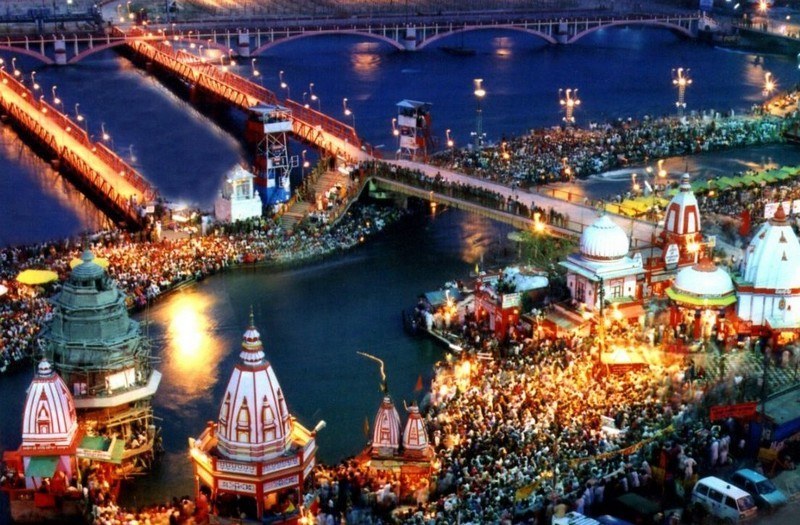Settled on the beautiful Bilwa Parvat in the Shivalik run of the Himalayas, the Mansa Devi Sanctuary is one of the most loved Hindu sanctums in India. Found in Haridwar, Uttarakhand, this sanctuary is committed to Goddess Mansa Devi, accepted to be a sign of Shakti and a granter of wishes. The sanctuary is a major fascination for travelers and visitors, advertising a quiet otherworldly involvement coupled with staggering sees of Haridwar and the Ganges River.
This article investigates the history, mythology, noteworthiness, and travel tips for going by Mansa Devi Temple.

Historical and Legendary Significance
Origins of the Temple
The history of Mansa Devi Sanctuary is interwoven with Hindu mythology. The title “Mansa” is inferred from the Sanskrit word “mansha,” meaning “wish.” The goddess is accepted to fulfill the ardent wants of her lovers, making the sanctuary a well known goal for those looking for divine blessings.
Mythological Roots
Mansa Devi is considered a shape of Goddess Parvati, the associate of Ruler Shiva, or a sign of Shakti. Agreeing to legend, Mansa Devi developed from Ruler Shiva’s intellect. She is related with nagas (serpent divinities) and is regularly delineated with a wind around her neck. This association with serpents means her control to prevail fears and give prosperity.
The sanctuary too holds a critical put in the Hindu convention of shaktipeethas, which are heavenly locales related with the goddess’s energy.

Architecture and Deity
Temple Design
The Mansa Devi Sanctuary grandstands conventional Hindu engineering with complicated carvings and dynamic wall paintings. The primary holy place houses two icons of the goddess. One icon portrays her with three mouths and five arms, whereas the other depicts her with eight arms, symbolizing her divine and effective nature.
Scenic Location
Perched on Bilwa Parvat, the sanctuary offers breathtaking sees of Haridwar, the Ganges Stream, and the encompassing slopes. The otherworldly air combined with the characteristic excellence makes this a one of a kind journey site.
Pilgrimage and Rituals
Worship Practices
Devotees visit the sanctuary to offer supplications, coconuts, blossoms, and sacrosanct strings. It is standard to tie a string to the temple’s sacrosanct tree as a image of one’s wish. Once the wish is satisfied, the lover returns to unfasten the string, completing the ritual.
Festivals and Celebrations
Navratri: The sanctuary is particularly swarmed amid the Navratri celebration, celebrated twice a year. Lovers run to look for gifts and take part in expand rituals.
Kanwar Yatra: Amid this celebration, travelers visit Mansa Devi Sanctuary along with other noteworthy sanctuaries in Haridwar and Rishikesh.
Spiritual Importance
Mansa Devi Sanctuary is a portion of the Haridwar Panch Tirth (five journey destinations), along with Har Ki Pauri, Chandi Devi Sanctuary, Neel Dhara Pakshi Vihar, and Kushavarta Ghat. Pioneers frequently visit Mansa Devi and Chandi Devi sanctuaries together, a custom known as the Siddha Peeth Yatra.
The sanctuary is too a source of motivation for otherworldly searchers and sightseers looking to encounter India’s wealthy social and devout heritage.

How to Reach
By Foot
Devotees who favor a conventional journey encounter can climb the steps driving to the sanctuary. The journey is decently challenging and takes approximately 30-45 minutes, depending on one’s pace.
Cable Car (Ropeway)
The Mansa Devi Udan Khatola is a well known and helpful way to reach the sanctuary. The ropeway offers an airborne see of Haridwar and the lavish environment, making the travel to the sanctuary an involvement in itself. The cable car ride is particularly favored by elderly pioneers and visitors with restricted time.
Best Time to Visit
The sanctuary is open all through the year, but the best time to visit is amid the spring and harvest time seasons (Walk to April and September to November). The climate is wonderful, and the Navratri celebrations amid these periods include a merry atmosphere to the temple.
Haridwar The Gateway to the Gods
Haridwar are inundated in an charming mix of old customs, dynamic culture, quiet scenes, and significant commitment to the sacrosanct Ganges
Tips for Visitors
Plan Ahead: If going by amid celebrations, anticipate huge swarms. Early mornings are the best time to maintain a strategic distance from long queues.
Comfortable Clothing: Wear comfortable and unassuming clothing appropriate for sanctuary visits and trekking.
Carry Basics: Bring water bottles, a cap, and sunscreen, particularly if you arrange to walk to the temple.
Photography: Whereas photography is permitted in the sanctuary region, maintain a strategic distance from clicking pictures interior the sanctum.
Stay Adjacent: Haridwar offers a run of lodging, from budget guesthouses to extravagance lodgings. Remaining close Har Ki Pauri guarantees simple get to to other attractions as well.
Nearby Attractions
Mansa Devi Sanctuary is portion of the otherworldly scene of Haridwar, which is dabbed with other outstanding sites:
Chandi Devi Sanctuary: Found on Neel Parvat, this sanctuary is another shaktipeetha devoted to Goddess Chandi.
Har Ki Pauri: A popular ghat along the Ganges, it is known for the mesmerizing Ganga Aarti.
Daksheshwar Mahadev Sanctuary: Arranged in Kankhal, this sanctuary is devoted to Master Shiva and is wealthy in legendary significance.
Rajaji National Stop: For nature devotees, this adjacent stop offers natural life safaris and picturesque landscapes.
Spiritual and Social Impact
Mansa Devi Sanctuary is more than fair a put of adore; it is a social image of India’s otherworldly legacy. It draws individuals from all strolls of life, making a space for solidarity and dedication. The sanctuary too boosts tourism in Haridwar, contributing to the nearby economy whereas protecting the city’s antiquated conventions.



